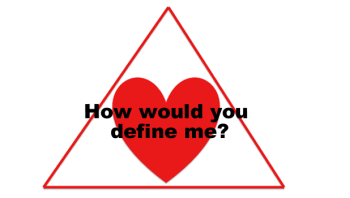I have facilitated many pre-marital conversations; at some point the order of service to be used at the wedding is discussed.
The order varies from “by the book Episcopal” to multi-faith (Christian/Jewish/Hindu) to seriously spiritual but not sectarian nor denominational.
I am always ready to explore with the couple what it is they want and in so doing many of their personal values and expectations are articulated. Everything in wedding preparation is significant, under the right eyes of a facilitator and officiant.
I have come to understand that three themes must be combined within the marriage ceremony; how they are expressed, blended and emphasized will vary but they need to be present.
The three points of this equal triangle are public, social and spiritual.
Briefly, the public aspect is served as state government issues a license that all other agencies will recognize. The public aspect is also served as guests and bridal party arrive at the place of celebration – all this declares clearly to the world, “We are to be married”.
Then, the social aspect is served as family and friends are notified, invited and attend the wedding ceremony. Not everyone shares my strong views about the primacy of the newly-married unit over all other prior relationships but… I hope that all agree and work to accept that once married priorities change. The wedding makes this statement to near and far family, friends close and not so close. Oh I could write so much more about this.
And finally, the spiritual aspect is served as room is made for the spiritual, that which cannot be defined but is powerfully real and present.
The passage below, from what might appear as an obscure Old Testament text, shows the king wanting to call into play these three vital, crucial elements in his commitment ceremony to the Lord and the people.
2 Kings, 23:1-3 (Message Translation)
The king acted immediately, assembling all the elders of Judah and Jerusalem. Then the king proceeded to The Temple of God, bringing everyone in his train—priests and prophets and people ranging from the famous to the unknown. Then he read out publicly everything written in the Book of the Covenant that was found in The Temple of God. The king stood by the pillar and before God solemnly committed them all to the covenant: to follow God believingly and obediently; to follow his instructions, heart and soul, on what to believe and do; to put into practice the entire covenant, all that was written in the book. The people stood in affirmation; their commitment was unanimous.

